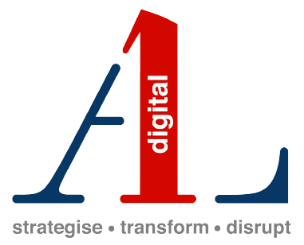
Unveiling the Distinctions between Microservices and Systems Integration
In the ever-evolving realm of digital technology, two prominent paradigms have emerged as key players in shaping the architecture and functionality of modern applications: Microservices and Systems Integration. While both are integral components in the digital landscape, they serve distinct purposes and offer unique advantages. Let's delve into the intricacies of Microservices and Systems Integration, understanding their differences and their roles in driving innovation.
Microservices: A Modular Symphony of Functionality
Definition and Architecture: Microservices architecture is an approach to software development where applications are broken down into small, independent services that can operate autonomously. Each microservice represents a specific business capability and communicates with others through well-defined APIs.
Modularity and Scalability: One of the key features of Microservices is their modularity. Each service can be developed, deployed, and scaled independently, promoting agility and flexibility. This modularity facilitates parallel development efforts, allowing teams to work on different microservices simultaneously.
Benefits:
Scalability: Easy scaling of individual services to meet demand.
Isolation: Faults in one microservice do not necessarily affect others.
Technology Diversity: Each microservice can use the most suitable technology stack.
Challenges:
Complexity: Managing a network of microservices requires sophisticated orchestration.
Data Consistency: Maintaining data consistency across microservices can be challenging.
Systems Integration: Bridging the Digital Divide
Definition and Concept: Systems Integration involves connecting different subsystems or applications to function as a coordinated whole. It ensures seamless data flow and communication between disparate systems, allowing them to work together efficiently.
Unified Functionality: Systems Integration aims to create a unified system from various subsystems, ensuring that information can flow seamlessly across the integrated environment. This integration can occur at various levels, from data to business processes.
Benefits:
Efficiency: Streamlining processes and reducing manual efforts.
Data Accuracy: Ensuring consistency and accuracy of data across integrated systems.
Enhanced Functionality: Creating a comprehensive system that leverages the strengths of individual components.
Challenges:
Compatibility: Ensuring compatibility between different systems and technologies.
Maintenance: Ongoing maintenance to accommodate changes in integrated systems.
Distinguishing Factors
Scope:
Microservices: Focuses on breaking down applications into small, independently deployable services.
Systems Integration: Aims to connect and unify different systems or subsystems.
Independence:
Microservices: Emphasizes independence and autonomy of each service.
Systems Integration: Focuses on creating cohesion and unity among integrated systems.
Development Approach:
Microservices: Supports agile development with decentralised teams.
Systems Integration: Involves coordinating efforts to create a unified system.
Scaling:
Microservices: Enables scaling of individual services.
Systems Integration: Focuses on optimising the performance of the integrated system as a whole.
In the dynamic landscape of the digital world, both Microservices and Systems Integration play crucial roles in shaping the architecture and functionality of applications. While Microservices thrive on modularity and independence, Systems Integration excels in creating harmonious, unified systems. Understanding the distinctions between these two paradigms is essential for businesses seeking to leverage the full potential of digital technologies, allowing them to craft innovative, efficient, and cohesive solutions tailored to the demands of the modern era.
Let A1L Digital help you navigate the digital landscapes of Microservices and Systems Integration.
